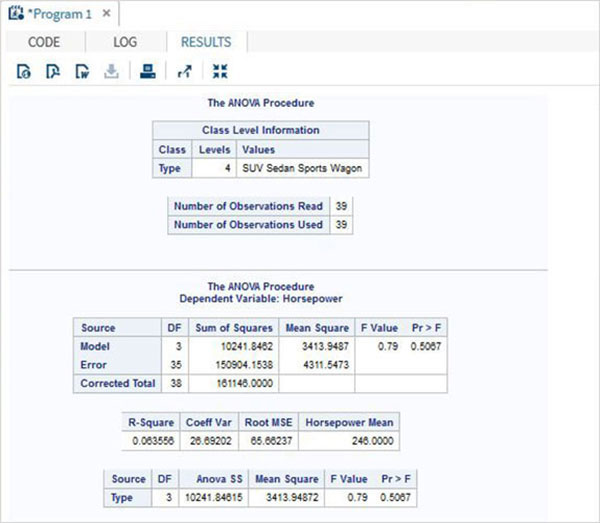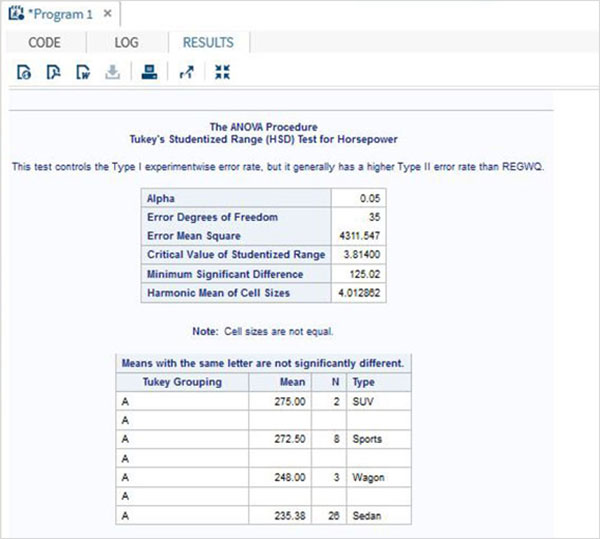SAS one-factor variance analysis
May 27, 2021 SAS
Table of contents
ANOVA stands for ANOVA. I n SAS, it is done using PROC ANOVA. I t performs analysis of data from a variety of experimental designs. I n this process, a continuous response variable called a cause variable is measured under experimental conditions known as the identification of classified variables of independent variables. C hanges in response are considered to be attributed to effects in the classification, where random errors take into account the remaining changes.
Grammar
The basic syntax for applying PROC ANOVA in SAS is:
PROC ANOVA dataset ; CLASS Variable; MODEL Variable1=variable2 ; MEANS ;
The following is a description of the parameters used:
- dataset is the name of the dataset.
- CLASS gives variables that are used as classification variables.
- MODEL uses some variables in the data set to define the model to fit.
- Variable_1 and Variable_2 are the variable names of the datasets used in the analysis.
- MEANS defines the comparison of the calculated type and the means.
A one-factor variance analysis is used
Cases
Let's consider the dataset SASHELP.CARS. H ere we study the dependence between variable car types and their horsepower. B ecause the car type is a variable with a classification value, we treat it as a class variable and use both variables in MODEL.
PROC ANOVA DATA = SASHELPS.CARS; CLASS type; MODEL horsepower = type; RUN;
When we execute the code above, we get the following results:

Application of ANOVA and MEANS
Cases
We can also extend the model by applying MEANS statements, where we use turkey's Studentized method to compare the averages of various types of cars. T he categories for car types list the average horsepower in each category and some added value, such as the margin of error.
PROC ANOVA DATA = SASHELPS.CARS; CLASS type; MODEL horsepower = type; MEANS type / tukey lines; RUN;
When we execute the code above, we get the following results:
